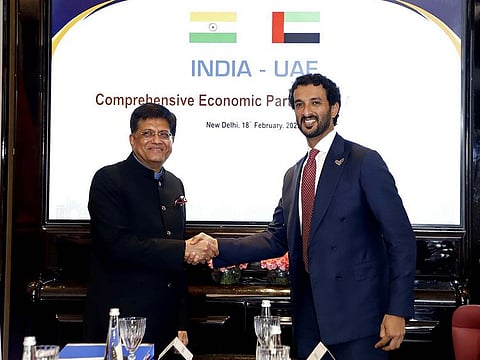UAE and India’s new alliance is what 21st century economic deals should be
The CEPA works to the advantage of both, creating new opportunities

The UAE and India have inked an economic partnership agreement that will lead to significant strategic outcomes for both. It is a 21st century deal that is backed by the their shared histories and trade alliances, and adds extra momentum to an already strong relationship. These by itself will ensure the fast-track implementation of the CEPA (Comprehensive Economic Partnership Agreement) provisions that cover many vital sectors.
Historically, India was the key market for the UAE and GCC exports of natural pearls, which was the GCC’s export commodity before oil, while the Gulf countries imported most of their food and consumer products from India. Many Emirati and Gulf merchants built their companies fueled by this historical relationship, which took a new turn after the independence of India and the GCC states. This strategic partnership serves the development needs of both, especially as each has the capabilities the complete the other.
India is widely considered to be one of the world’s fastest growing economies with prospects that would help it reach an advanced ranking within the G20 group. Just recently, it outpaced the British economy and becoming the fifth largest economy in the world. This momentum requires that India will need huge energy resources, and something the country lacks within. Therefore, it seeks guaranteed energy supplies from stable suppliers such as the UAE.
Help with diversification
Without these guarantees of energy sources, it would be difficult to achieve the growth India wants to reach. The UAE can provide these very guarantees under the newly signed strategic partnership. The UAE economy is moving to diversify through its petrochemical industries, fertilizer plants and hydrogen (green and blue) investments. The agreement with India paves the way to develop joint investments, and not limited to government-to-government alliances.
This means trade will be one of the first to benefit. The UAE is considered the key commercial hub in the Middle East, through which many commodities are re-exported, thanks to its advanced infrastructure and logistical capabilities for transport and storage. This will give India more advantages to increase its exports via the UAE.
The agreement will definitely help develop trade exchanges touch $100 billion over the next five years, up from $60 billion last year. This will add 1.7 per cent, or $9 billion, to the UAE’s gross domestic product. The two countries have thus set a benchmark for how equal and fair relations should be between any two countries to develop their economies and away from rivalries and destructive conflicts that consume resources and cost innocent lives. This approach can be replicated…
Sign up for the Daily Briefing
Get the latest news and updates straight to your inbox

